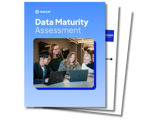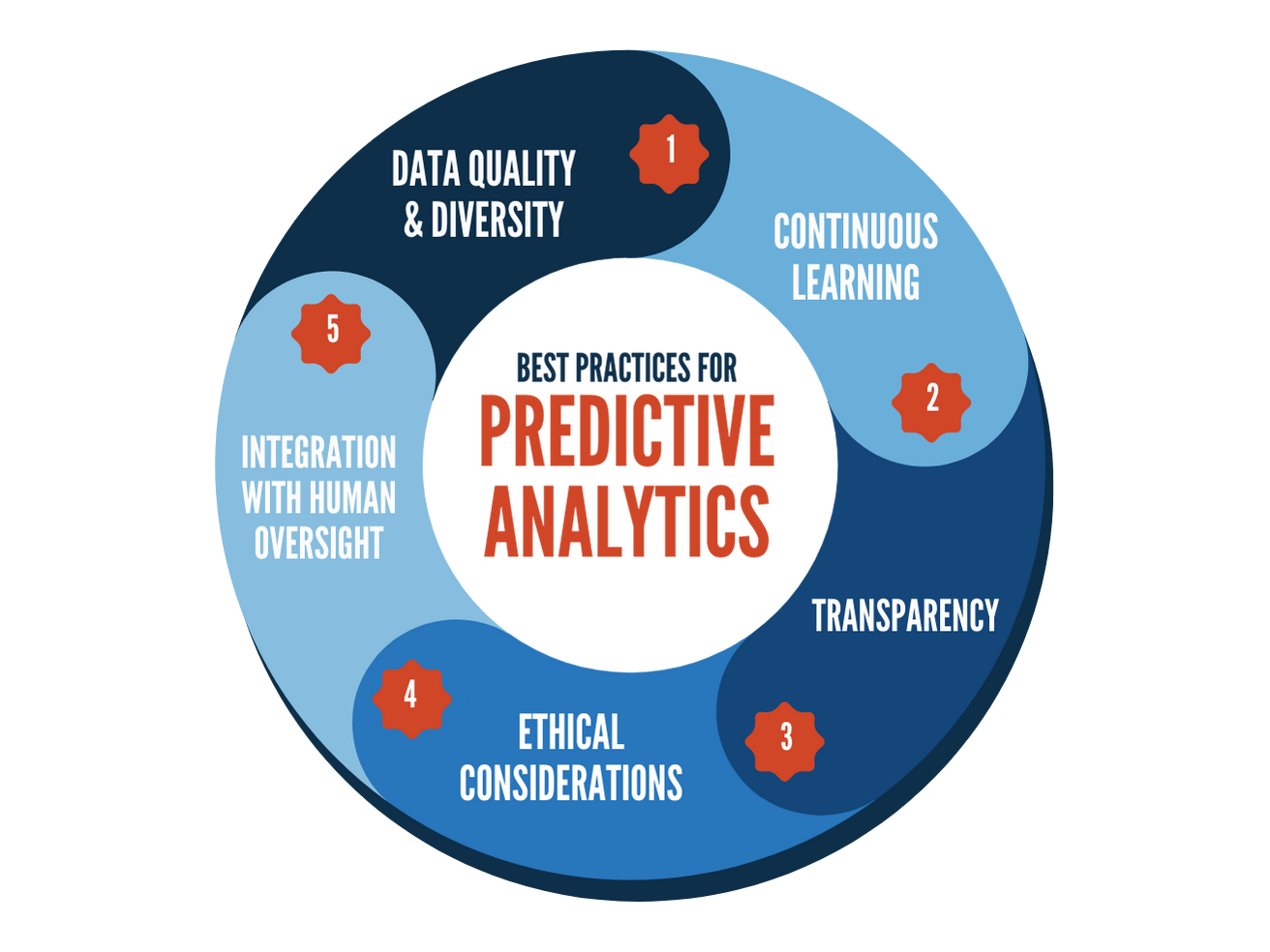B2B marketing and data analytics go hand in hand, blending strategy with precise insights. With so much data available, knowing how to sift through it and find what really matters is a game-changer. Today, we’re diving into how data shapes B2B marketing - helping businesses better segment their audience, personalize campaigns, and connect with clients in a more meaningful way.
The Role of Data in B2B Marketing
Data is the compass that guides B2B marketers through the complex journey of understanding and reaching their ideal customers. It informs every aspect of customer interaction, from market segmentation to personalized marketing. By analyzing customer data, marketers can identify patterns and preferences of each segment, and tailor their approach accordingly.
In this section we will explore the role of data in crafting marketing strategies that speak directly to the needs and challenges of B2B clients.
Understanding Customer Segments
Understanding your customer segments goes beyond basic demographics. It's about unraveling the web of business needs, purchasing behaviors, and decision-making processes that define each segment. By leveraging data analytics, marketers can deconstruct interaction data, spot trends, and identify unique characteristics that differentiate one customer from another, allowing for hyper-targeted marketing strategies.
For instance, data can reveal that a particular segment frequently engages with content related to an industry-specific challenge, signaling an opportunity to create tailored content that addresses these pain points. By aligning marketing efforts with the identified patterns and preferences, businesses can deliver messages that resonate on a deeper level, fostering a connection that's both relevant and timely.
Data-Driven Personalization
Personalization is key to breaking through the noise and capturing the attention of busy professionals. Data-driven personalization is about leveraging the data at your fingertips to deliver messages that speak directly to the needs and interests of each client. It's a strategic pivot from a one-size-fits-all approach to one that values the unique journey of each client.
Through data analysis, marketers can pinpoint where a client is in the buying cycle, what solutions they've explored, and what information they're likely to need next. This insight enables the creation of personalized experiences across all touchpoints, from customized emails to customized content offerings on your website. For example, a potential client that shows interest in a particular service might receive a series of case studies and whitepapers that inform them on the topic and demonstrate your company's expertise in that area.
By harnessing the power of data to personalize interactions, B2B marketers can significantly enhance the effectiveness of campaigns, leading to increased engagement, higher conversion rates, and a more robust bottom line.
Analytics: Turning Data into Insights
Analytics tools are the translators that turn raw data into actionable insights. They sift through the noise to find signals that indicate customer behavior, campaign performance, and market trends. This section will highlight a range of analytics tools, from Google Analytics to advanced CRM systems, and showcase examples of how businesses could leverage these tools to drive successful B2B marketing campaigns.
Choosing the Right Tools
The right analytical tools help to simplify the mass amounts of data generated by digital interactions. Google Analytics 4 stands out as a fundamental tool for marketers. It offers a comprehensive suite of features that caters to the needs of B2B marketers, from tracking user interactions across platforms to understanding the full life cycle of the customer journey.
GA4's ability to integrate with Google's advertising platforms alongside its predictive insights powered by machine learning makes it an indispensable asset. It not only provides a snapshot of current performance but also helps forecast future customer behavior, enabling marketers to be proactive rather than reactive in their strategy.
For those seeking more specialized insights, CRM systems like Salesforce integrate well with Google Analytics, providing a more granular view of customer interactions and sales funnels. This integration allows for a seamless flow of information, ensuring that every touchpoint along the customer journey is captured and analyzed. By leveraging the strengths of both Google Analytics and CRM systems, B2B marketers can achieve a level of precision in their campaigns that was previously unattainable.
Business Application Examples
The benefits of practical application of tools like Google Analytics and CRM systems in the B2B space can be seen in many different areas. For instance, a B2B tech company might use Google Analytics to track the effectiveness of its multi-channel campaigns, gaining insights into which channels drive the most valuable leads and adjusting budgets accordingly.
Another example could be a B2B e-commerce platform utilizing the enhanced measurement features of GA4 to better understand user experience with their online catalog. This data aids in the improvement of product listings and the user interface, leading to a more streamlined shopping experience and an increase in conversions.
Choosing the right tool is important, and Google Analytics and CRM systems, with their advanced tracking capabilities and integration potential, have proven to be powerful allies for B2B marketers aiming to leverage data for a strategic advantage.
Do you trust your data?
Turn uncertainty into insight. Our Data Maturity Assessment gives you a personalized report with your strengths, gaps, and next steps.

Key Metrics for B2B Marketing Success
Certain key performance indicators (KPIs) stand out as beacons of success. This section will discuss the most critical metrics that B2B marketers should monitor, such as lead conversion rates, customer lifetime value, and engagement scores. We'll also discuss how to align these KPIs with overarching business objectives to ensure that marketing efforts are not just measurable, but also meaningful.
Aligning KPIs with Business Goals
Key Performance Indicators (KPIs) are the compass that guides B2B marketers through the complex terrain of data analytics. Selecting the right KPIs is a strategic exercise that aligns marketing efforts with business objectives. For instance, if the goal is to increase market share, KPIs may focus on new account acquisitions and market penetration rates. Or, if the focus is on profitability, metrics like customer lifetime value (CLV) and average deal size become more pertinent.
The alignment of KPIs with business goals ensures that each marketing initiative is evaluated based on its contribution to the company's goals and its success. It transforms data into a narrative that shows how marketing efforts are moving the needle on strategic business objectives. This approach fosters a culture of accountability and results-driven marketing within the organization.
Monitoring and Analysis
The monitoring and analysis of KPIs is critical to understand the effectiveness of marketing strategies and tactics. Regularly scheduled reviews of these metrics should be ingrained in the marketing process, allowing for real-time adjustments and strategic pivots. Tools like Google Analytics and Looker Studio offer dashboards and custom reports that make monitoring both intuitive and insightful.
The analysis goes beyond the observation of numbers; it involves diving deep into the 'why' behind the 'what’, and ultimately pulling out the ‘why we should care’. It's about understanding the underlying factors driving KPI performance and using those insights to refine marketing strategies. For example, a dip in CLV might prompt a review of customer service touchpoints or an analysis of post-purchase engagement strategies.
Effective monitoring and analysis of KPIs enable B2B marketers to stay agile and make data-informed decisions. This ongoing process ensures that the marketing department remains a powerful engine for business growth and success.
Data-Driven Decision Making
Integrating Data into Marketing Strategy
Integrating data into the marketing decision-making process ensures that strategies are grounded in reality. This section will outline strategies for embedding data at the heart of marketing decisions, while also acknowledging the role of creativity and intuition in marketing. We'll explore how to strike the right balance between data-driven approaches and the human touch.
The Human Element
While data provides the quantitative backing for strategic decisions, the human element injects creativity and empathy into the marketing strategy. It's the creative storytelling, understanding of customer pain points, and emotional connection that turn data-driven strategies into compelling marketing campaigns.
Balancing data with human insight involves looking beyond the numbers to understand the motivations, challenges, and aspirations of the target audience. It's about using data as a starting point for creative ideation, not the end-all. For instance, data might tell you that CEOs are the primary decision-makers for your product, but it's the human element that will determine how to craft a message that resonates with the ambitions and daily realities of a CEO.
Incorporating the human element is about recognizing that behind every data point is a and leveraging that data to enhance the human experience, not replace it. By combining data-driven insights with human creativity and intuition, B2B marketers can develop strategies that are not only effective but also genuinely connect with their audience on a deeper level.
Predictive Analytics in B2B Marketing
Predictive analytics offers a glimpse into future trends and customer behaviors. B2B marketers can use predictive models to anticipate market changes, identify emerging opportunities, and personalize marketing efforts for maximum impact. We'll also provide best practices for integrating predictive analytics into your marketing strategy.
Forecasting Trends and Behaviors
The ability to anticipate and prepare for future trends and customer behaviors can set a company apart from its competitors. By analyzing patterns in customer behavior, purchase history, and market fluctuations, B2B marketers can make educated predictions about what their customers will do or need next.
For instance, if predictive analytics indicates an emerging trend in the preference for sustainable products in the tech industry, a B2B marketer might start developing a campaign highlighting the company's eco-friendly products or practices. This proactive approach allows businesses to align their offerings with future demands, ensuring relevance and continued customer engagement.
Best Practices for Predictive Analytics
B2B marketers should adhere to a set of best practices that ensure the accuracy and ethical use of predictive models. This includes:
- Data Quality and Diversity: Ensure that the data used for predictive models is of high quality and comes from a variety of sources to avoid biases and inaccuracies.
- Continuous Learning: Predictive models should be dynamic, learning from new data and adjusting predictions accordingly. This requires regular updates and maintenance of the models to reflect the latest information.
- Transparency: Be transparent about the use of predictive analytics with both customers and stakeholders. This builds trust and ensures that customers understand how their data is being used.
- Ethical Considerations: Use predictive analytics in a way that respects customer privacy and adheres to data protection regulations. Avoid using predictive models in ways that could be considered manipulative or invasive.
- Integration with Human Oversight: While predictive models can provide valuable insights, they should not operate in a vacuum. Human oversight is necessary to interpret the data correctly and apply it in a way that aligns with the company's values and goals.
By following these best practices, B2B marketers can effectively integrate predictive analytics into their marketing strategies, using the insights gained to make smarter, more informed decisions that drive business growth and customer satisfaction.

Marcel Digital's Expertise in Data-Driven B2B Marketing
At Marcel Digital, we've been harnessing the power of data and analytics to drive B2B marketing success for over two decades. Our expertise lies in not just collecting data, but in interpreting it, finding the story it tells, and translating that into actionable marketing strategies. If you're ready to unlock the full potential of your B2B marketing efforts with a data-driven approach, reach out to us.
Let's turn data into your competitive advantage.
Analytics
About the author
Dan Kipp
Dan Kipp is the Google Analytics and Google Tag Manager guru at Marcel Digital. He loves traveling, cooking, sports, and spending spare time with friends and family.